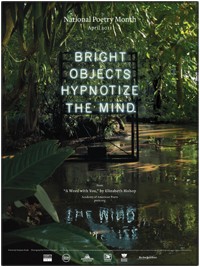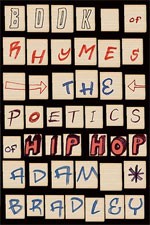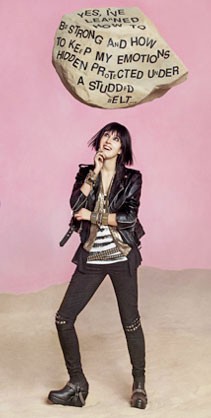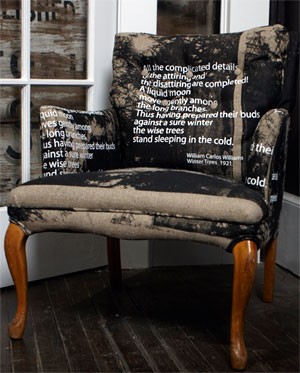 This is the poster for National Poetry Month. Their website has lots of resources — including a map to find out what is happening in your state and a list of 30 ways to celebrate.
This is the poster for National Poetry Month. Their website has lots of resources — including a map to find out what is happening in your state and a list of 30 ways to celebrate.
![]() I thought I’d spend the month seeing where poetry showed up in every day life. In catching up on reading my pile of Poetry Magazines, I found an article by David Orr about the anthology Poetry of the Law: From Chaucer to the Present. The book, to quote Orr, “manages to give the reader a sense of the ways in which contemporary poetry can encompass legal subjects.” So that’s not really poetry in “every day life” but in a subsequent issue, a reader responded to Orr’s article with this letter to the editor
I thought I’d spend the month seeing where poetry showed up in every day life. In catching up on reading my pile of Poetry Magazines, I found an article by David Orr about the anthology Poetry of the Law: From Chaucer to the Present. The book, to quote Orr, “manages to give the reader a sense of the ways in which contemporary poetry can encompass legal subjects.” So that’s not really poetry in “every day life” but in a subsequent issue, a reader responded to Orr’s article with this letter to the editor
In June 2009, Supreme Court Justice David Souter retired to his home in New Hampshire. To mark the occasion, Chief Justice John Roberts read a letter signed by the other members of the Court. “We understand your desire,” the justices said, “to trade white marble for White Mountains, and to return to your land ‘of easy wind and downy flake’ ” — quoting, of course, from (Robert Frost’s) Stopping by Woods on a Snowy Evening… Souter responded, “You have quoted the poet, and I will too, in words that set out the ideal of the life engaged, ‘where love and need are one.’ That phrase accounts for the finest moments of my life on this Court.”
Souter is quoting from Frost’s Two Tramps in Mud Time.




